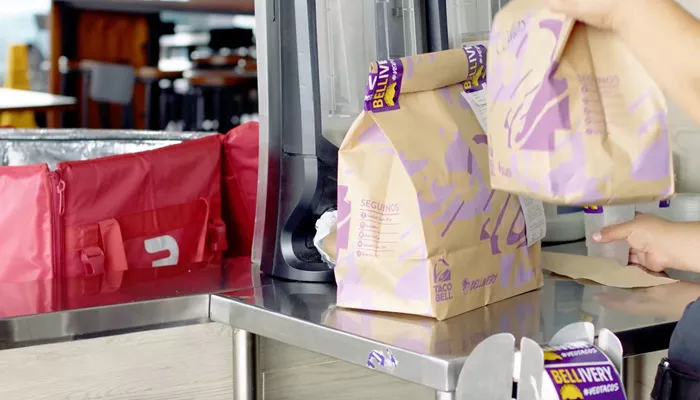Taco Bell is at the forefront of innovation in the fast-food industry, particularly with its recent implementation of artificial intelligence (AI) in drive-thru operations. This technology aims to transform the customer experience by enhancing order accuracy, reducing wait times, and improving overall efficiency. As part of Yum! Brands, Taco Bell’s initiative reflects a broader trend in the restaurant sector towards integrating advanced technology to streamline operations and enhance customer satisfaction.
The Role of AI in Drive-Thru Operations
Understanding Voice AI Technology
Taco Bell’s drive-thru system utilizes voice AI technology that mimics human speech. This system is designed to take customer orders through natural language processing (NLP) and speech recognition. By interpreting spoken language, the AI can accurately understand and process orders, which helps to minimize errors that can occur during busy service times.
The technology has been tested extensively over two years, allowing Taco Bell to refine its capabilities before a wider rollout. Currently, this voice AI system is operational at over 100 locations across 13 states, with plans to expand to hundreds more by the end of 2024.
Key Features of Taco Bell’s Voice AI
Order Taking: The AI assistant takes customer orders directly at the drive-thru, relaying them accurately to kitchen staff.
This reduces the cognitive load on human employees and allows them to focus on food preparation and customer service.
Accuracy Improvement: One of the primary benefits highlighted by Taco Bell is improved order accuracy. The AI system has shown a significant reduction in mistakes compared to traditional ordering methods.
Reduced Wait Times: By streamlining the ordering process, Taco Bell aims to cut down on wait times for customers. Faster service not only enhances customer satisfaction but also increases throughput during peak hours.
Enhanced Customer Experience: The voice AI provides a consistent and friendly interaction for customers. This is crucial in maintaining Taco Bell’s brand image as a fun and approachable fast-food option.
Data Collection and Insights: The AI system also collects data on customer preferences and ordering patterns. This information can be used to optimize menu offerings and improve marketing strategies.
Implementation Strategy
Phased Rollout
Taco Bell’s approach to implementing voice AI has been methodical. The company began with pilot programs at select locations to gather feedback from both customers and employees. Based on positive responses, they have gradually expanded the technology’s presence in their drive-thrus.
Currently, there are plans for further expansion across more than 300 locations by the end of 2024. This phased approach allows Taco Bell to address any challenges that arise during the implementation process effectively.
Training and Support for Employees
To ensure a smooth transition, Taco Bell has invested in training programs for its staff. Employees are educated on how to work alongside the AI system, focusing on enhancing their roles rather than replacing them. The goal is to create a collaborative environment where human workers can engage more meaningfully with customers while relying on AI for routine tasks.
Benefits of AI Integration
Operational Efficiency
The integration of voice AI into Taco Bell’s drive-thru operations has led to significant improvements in operational efficiency:
Eased Workloads: Employees report that having an AI assistant helps manage orders more effectively, allowing them to concentrate on food preparation and customer interactions.
Consistent Performance: Unlike human workers who may experience fatigue or distractions during busy shifts, AI maintains consistent performance throughout service hours.
Financial Impact
Yum! Brands has noted that the introduction of voice AI has contributed positively to financial performance:
Increased Sales: With improved order accuracy and faster service, there is potential for increased sales as customers are more likely to return when they have positive experiences.
Cost Management: While some concerns exist about staffing levels due to automation, Taco Bell emphasizes that the technology is intended to support employees rather than replace them. This approach can lead to better cost management without sacrificing service quality.
Customer Reception
The initial reception from customers has been overwhelmingly positive. Many appreciate the speed and accuracy of their orders when using the drive-thru equipped with voice AI technology. Feedback indicates that customers enjoy the novelty of interacting with an AI system while still receiving high-quality service from human staff members.
Addressing Concerns
Despite the positive reception, there are concerns regarding reliance on technology in fast-food settings:
Human Touch: Some customers worry that too much automation could detract from personal interactions with staff.
However, Taco Bell reassures that human employees will always be available to assist if needed.
Technical Issues: Like any technology, voice AI systems can encounter glitches or misunderstand orders. Taco Bell is prepared with protocols for human intervention when necessary.
Conclusion
Taco Bell’s integration of voice AI into its drive-thru operations represents a significant step forward in enhancing customer experience and operational efficiency within the fast-food industry. By focusing on improving order accuracy, reducing wait times, and supporting employees rather than replacing them, Taco Bell aims to set a new standard for service in quick-service restaurants.
Related topics:
- Why Did Mcdonald’s Stop All Day Breakfast?
- The 8 Most Popular Drink at Mcdonald’s in 2024
- Why Did Mcdonald’s Stop Selling Breakfast Wraps?

